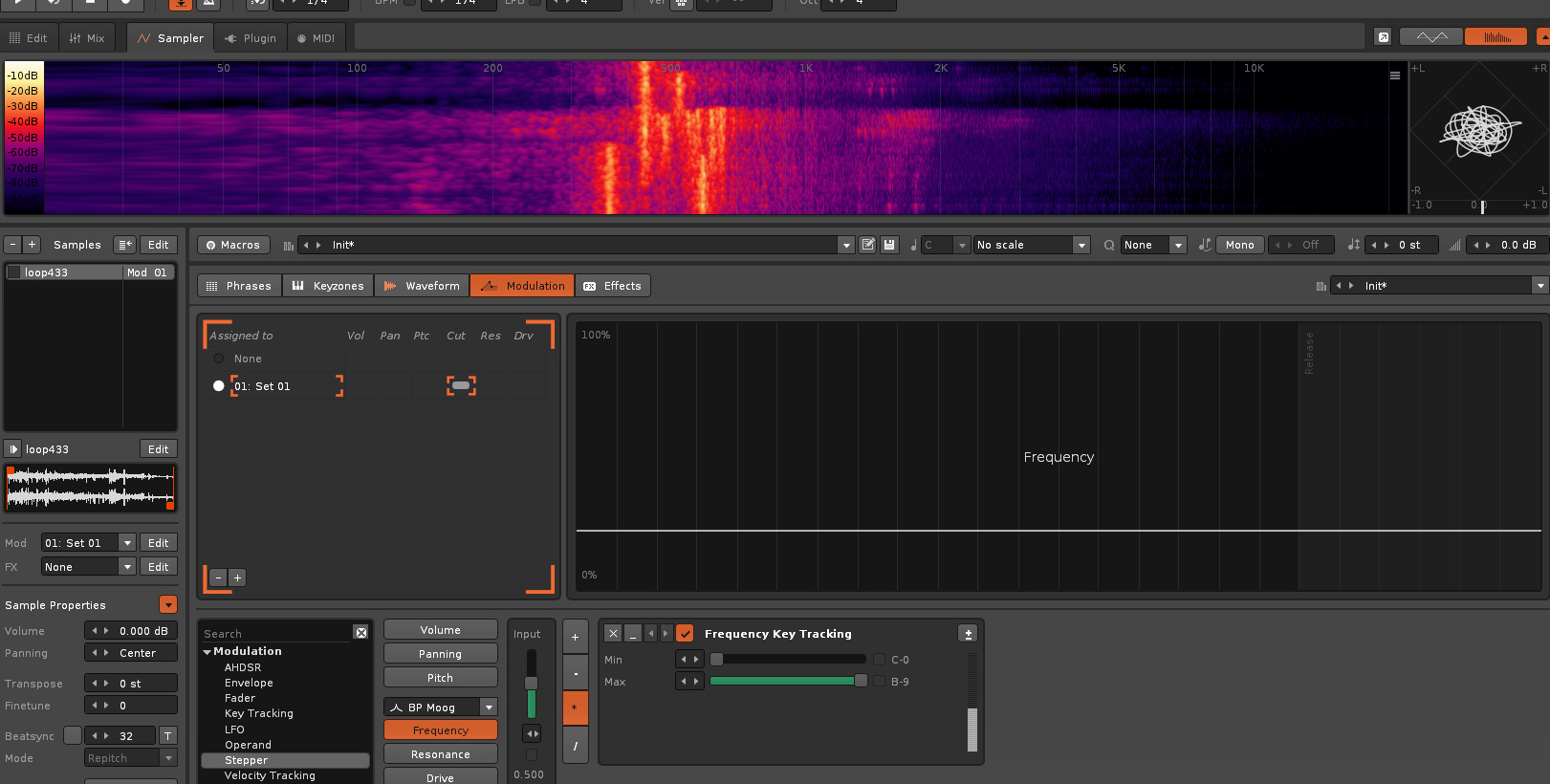UNable to play the Analog filter’s frequency chromatically over the whole keyboard range
INstrument filter or effect filter …
Altough the digital filters do not self oscilate , they suffer from the same problem , inaccurate pitch to frequency conversion.
I used a one shot decaying impulse sample , then tweaked
the kbd tracking device to control the filter’s cutoff in the effects section …it’salways a bit off.
For both the comb filter and the ring mod, their highest freq.is 7800 hertz , for the ring mod the lowest frequency is around 8Hz ,the default setting of the kbd (c0-b9) tracks it along the whole key range , but these settings don’t work for the analog filters
So different approach :
Kbd tracking device set to A3=220Hz ,A6=1760HZ …
TRiggering A4 gives us 490 Hz , that’s just ridiculous …see screenshot
And we’re talking about a limited 3 octave range here and allready the scaling is way off
Reducing the octave range A3 to A5 …triggering A4 gives us 470Hz .
Should I say more…
For the polyphonic filter it is even worse
g
For the polyphonic filter setting cutoff to 0.820 = 7800Hz=B9, multiplied by Kbd device default setting , stil No luck.
Check out the patch 'compare ’ left channel is keytracked ring mod , right channel is noise into keytracked poly filter …
The best results I got for the polyphonic filter was a bit more than a one octave range
There’s definately something wrong with the pitch to freq. scaling …
At least a few octaves would be more than normal , too bad these new improved filters can’t even do this, zdf or not .
I would be happy if someone could show me a working playable setup.
Also the frequency read out of the ring mod is wrong …A4 =440Hz and not 220
thanks
https://app.box.com/s/ds96ipzkwextt5ywdb2h9tjuqzdyj3j2
https://app.box.com/s/qfch4muuq1wnwhgb6o7bqvrgamxdq19n
,




